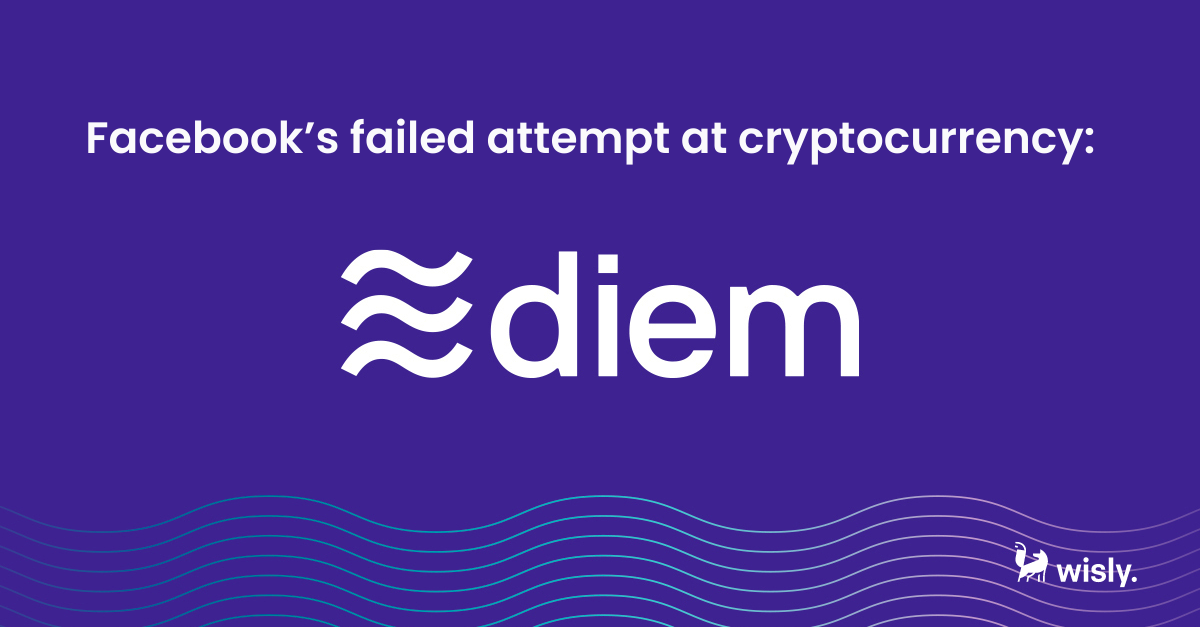Diem is a digital currency initiative led by META – Facebook’s parent company – and has been recently cancelled after months of speculation about the stablecoin’s future. This comes in the wake of fierce opposition from politicians and financial regulators – particularly considering whether other stablecoins can succeed as a viable method for business and consumer payments when central banks develop their own digital currencies.
Diem’s background

Initially dubbed Libra back in 2019, Facebook launched the Diem Association with the support of prominent industry players that included VISA and Mastercard, and tech giants like Spotify and Lyft.
The Diem Association was classified as a not-for-profit organisation with its headquarters in Geneva, Switzerland, and was created to manage this new cryptocurrency. There was hope that diving into payments would give META a fresh stream of revenue and greater influence.
Diem was intended to be a stablecoin – a type of cryptocurrency that has its value pegged to the performance of a fiat currency like the US Dollar. By doing so, Diem would avoid fluctuations in value that cryptocurrencies so often have to experience while offering the privacy and instant payments that cryptocurrencies offer.
By creating Diem as a stablecoin, META and its partners wanted to convince businesses and consumers that they could confidently use this cryptocurrency without risking their assets. While META had initially planned to attach Diem to various assets worldwide, they had since changed their minds and opted to peg it to a fiat currency.
The demise of Diem

With cryptocurrencies not the most popular amongst governments and financial institutions around the world, there was hope that Diem could provide a suitable middle ground. However, in November 2021, a US President’s Working Group on Financial Markets report requested new regulations for digital currencies – specifically mentioning that they could be used to finance terrorist groups and avoid anti-money-laundering rules.
The report stated that stablecoins should be regulated in the same manner as a traditional bank. In addition, META came under fire from prominent politicians who questioned the thought process behind its development. Members of Congress also suggested that due to META’s size, influence, and reach – Diem could easily emerge as a rival to the US Dollar – the prospect of which ruffled plenty of feathers.
When considering the above, coupled with the recent scandals that have entangled Facebook in recent times regarding data protection and the selling of consumer information to third parties – Diem was always going to face an uphill battle to gain traction from the authorities.
So the question on everyone’s minds is – Was Diem bound to fail because of META’s involvement or because of the underlying issues with stablecoins? Industry experts agree that Facebook’s reputation, especially its inability to protect the privacy of its consumers, has played a massive part in Diem’s demise. This is without even considering how META chose to ignore regulatory issues and the political implications of introducing Diem – a possible competitor to the mighty US Dollar.
Final thoughts
As of last week, Diem’s assets are being sold off with speculation that Silvergate Bank is buying the digital currency’s underlying technology for around $200 million. While Diem appeared to be a very ambitious project, stablecoins need unequivocal support from the banking system if they plan to be used widely – or as widely as META anticipated.
While getting regulatory approval would be possible for a project like Diem with support, protection of reserves, and insurance – in essence, this project was akin to creating a central bank digital currency (CBDC) but with the key difference being that a third party would be holding all the funds.
With governments and banks around the world creating their own CBDC’s, it is clear that for Diem to emerge as a practical alternative for payments, it would have to be initiated by the banking and financial services sectors as opposed to massive tech giants like META.
While CBDC’s would be much safer as they would enjoy direct backing from their respective governments, stablecoins like Diem are vulnerable to “bank-run” risks with insufficient reserves to satisfy deposited demands. In essence, not enough support from regulators and authorities has meant that Diem was doomed to fail from the very beginning.
So for 2022, it’s back to the drawing board for META as we wait in anticipation to see how they plan to dip their digital toes in the world of crypto.




